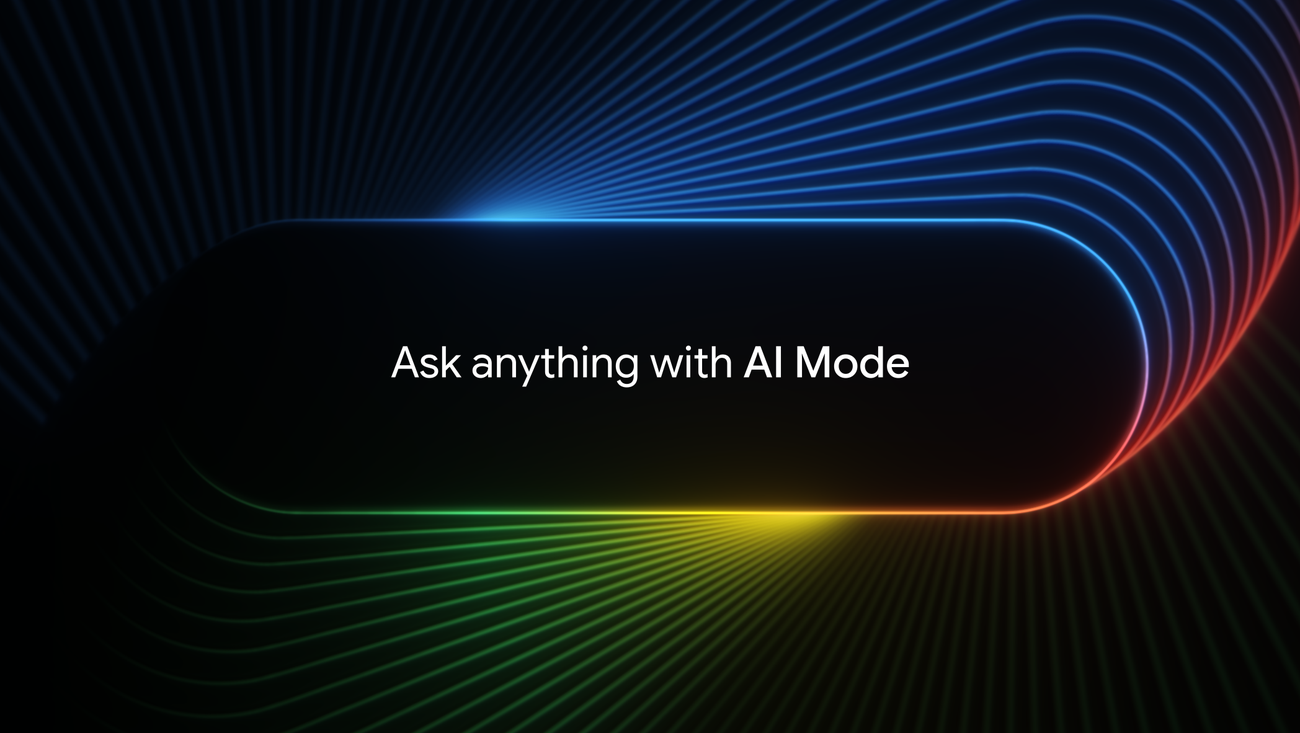
We’ve entered a new era of search. Users no longer just “search”—they now “ask.” With the explosion of tools like ChatGPT, Perplexity, Gemini, and Copilot, and with Google itself redefining results through its AI Overviews and AI Mode, the landscape has changed dramatically.

AI no longer stops at listing links: it now synthesizes, reasons, and delivers a single answer.
Faced with this revolution, the question that haunts every company and every marketer is just one: how do we stay relevant?
If artificial intelligence filters knowledge and responds directly, how can we be the authoritative source AI chooses to cite? How can we continue to capture not only product searches but also the deeper intents of our customers?
Many look for an answer in new technical tricks. The truth is that the solution isn’t technical, but strategic. To win in the AI era, we must return to fundamentals.
We live in a paradoxical time. The amount of information at our disposal is infinite, but our trust in it is at an all-time low.
The advent of generative artificial intelligence marked a point of no return. It transformed content creation from a craft into an industrial process, flooding every channel with text, images, and video at near-zero marginal cost. The result is a blanket of noise so dense it suffocates any signal.
This is no longer just an era of information overload; it’s an era of credibility crisis.
Consumers—whether private individuals or B2B procurement leads—have reacted by developing radical skepticism. Every marketing claim, every promise, every piece of content is filtered through a wall of distrust. “Fake news,” “content spam,” and “deepfakes” aren’t technology problems; they’ve become marketing’s core problem.
In this scenario, the old model based on interruption (interruption marketing) and mass persuasion is dead. Shouting louder in a deafening market is pointless.
Attention is no longer the scarce resource.
Trust is.
Welcome to the Trust Economy. A new model in which consumers no longer simply buy a product or service. They “buy” the brand—its values, its expertise, its integrity. They’re not looking for a seller; they’re looking for a reliable guide in a chaotic world.
In this new economy, the only sustainable strategy doesn’t rely on bigger ad budgets but on the methodical, patient construction of two fundamental pillars: Authority and Transparency. They’re no longer “values” to relegate to an “About Us” page; they’re the operating mechanisms for growth.
From persuasion to the credibility crisis
To grasp the depth of this shift, we need to analyze the collapse of the previous model.
For decades, marketing was a monologue. The era of the “Mad Men” (by the way, the namesake TV series is excellent—I recommend it to everyone) was based on a fundamental information asymmetry: the brand held all the product information and broadcast it to a passive audience through a few controlled channels such as television, radio, and print. Trust was assumed, not earned; it was a byproduct of notoriety and relentless repetition.

The first wave of the internet began to crack this model. The democratization of information with Web 2.0 gave rise to blogs, forums, and—above all—customer reviews. For the first time, the monologue became a dialogue, and often a chaotic, contentious one. Brands lost total control of the narrative. Trust stopped being a given and became a variable, influenced as much by the opinions of strangers online as by official advertising campaigns. Marketing adapted, shifting toward “social proof” and online reputation management.
Today we’re experiencing the third, and far more disruptive, phase: the industrialization of content through artificial intelligence. If the first phase of the internet created many voices, this new phase has created billions. The challenge is no longer distinguishing the brand’s voice from the consumer’s; it’s distinguishing the human and competent voice from AI output.
This content inflation has led to the immediate devaluation of content itself. A “10 tips for …” article generated by AI is formally correct but devoid of experience, context, and soul. It’s information without knowledge. Aware of this, the consumer no longer knows whom to trust.
In this void, value no longer lies in the information, but in the source of the information.
Authority: becoming the source
The first pillar for building trust is Authority. But it’s essential to distinguish competence from authority.
- Competence is knowing something (it’s static).
- Authority is being recognized by everyone as the reference point for that something (it’s dynamic and relational).
It’s not a badge you pin on your chest; it’s a reputation conferred by the market, competitors, and fellow experts.
Building this kind of strategic authority means stopping thinking like a seller and starting to operate like a research institute or an elite media company. The goal is no longer “produce content to rank,” but “invest in original knowledge to educate the market.”
How do you build Strategic Authority?
- Invest in original knowledge: Instead of rewriting yet another article on “industry trends,” commission original market research. Collect proprietary data and publish it. You’ll become the source that everyone else (journalists, analysts, competitors) must cite. That’s the win. We’ve worked with two of our clients to create an observatory for their specific markets; both are now reference points in Italy.
- Turn experience into Thought Leadership: AI can only synthesize what’s already been said. It can’t handle a difficult client for six months, botch a product launch, or develop a critical insight based on years of hands-on practice. That lived experience is your “moat” (the MOAT, a concept dear to Warren Buffett—and I’ll probably write an article about it) against AI. Turn it into models, frameworks, and critical analysis.
- Educate, don’t just sell: An authoritative company doesn’t talk only about its products. It educates the customer about the entire problem, providing the very criteria for evaluating solutions. Teaching has become the most powerful act of marketing. You’ve already won the sale before the comparison even begins.
Authority acts as a shield against commoditization. In a market where every product looks the same, customers don’t choose the cheapest; they choose the partner who shows the deepest understanding of their problem.
Transparency
If authority proves competence, transparency proves integrity. It’s the second pillar, and without it the first collapses under the weight of arrogance.
In strategic marketing, transparency isn’t naive oversharing. It doesn’t mean disclosing trade secrets. Rather, it’s a deliberate, strategic openness about those aspects customers deem crucial and where brands have historically been most opaque.
These aspects include pricing, processes, and—above all—failures.
Strategic Vulnerability
The most critical point of transparency lies in the Paradox of Vulnerability.
Most marketing is an exercise in curated perfection. Only successes, five-star reviews, and flawless case studies are shown. But consumers know perfection doesn’t exist. This gap between the imperfect reality they live and the glossy image projected by the brand fuels skepticism.
Radical honesty flips this dynamic:
- Admit mistakes: A brand that publicly admits an error, explains what it learned and how it plans to fix it instantly disarms the skeptic. It communicates, “we’re human, but responsible.” This controlled vulnerability builds a level of trust no million-dollar ad campaign can buy.
- Open the “Black Box”: Show your cost structure. Explain why a product is priced as it is (raw materials, ethical labor, R&D). This turns price from an obstacle into a justification of brand values.
- Handle criticism publicly: In the social era, not responding to criticism doesn’t make it disappear; it amplifies it. Responding publicly, with empathy and transparency (including a proposed solution), is the most powerful act of marketing. It shows all the “lurkers” that you’re a reliable partner even when things go wrong.
In the age of total connectivity, transparency is no longer optional—it’s necessary. Any mismatch between declared values and real operating practices will be discovered. Brands that proactively embrace it use marketing as a function of ethical compliance, forcing alignment between what they say and what they do. In a recent workshop we led, part of the discussion with the marketing team focused on “accepting criticism and publishing what we want and need to improve,” because in an increasingly experiential world this has become fundamental to customers’ decision-making.
The inseparable link:
It’s essential to understand these two pillars don’t work in isolation. You can’t choose just one.
- Authority without transparency = Arrogance. It’s the expert who uses incomprehensible language to avoid being questioned. It’s the company that publishes complex data without explaining the methodology. It builds a barrier, not a bridge. It inspires fear, not trust.
- Transparency without authority = Amateurism. It’s the honest but incompetent friend. A brand that says, “We’re totally transparent—our processes are a mess and we don’t know how to fix them.” It inspires sympathy, but never investment.
Real strategic magic happens when the two pillars work in synergy.
Authority gives you the confidence to be transparent (only a true expert can admit “I don’t know this” or “we got this wrong”). And transparency reinforces authority, because by openly showing your methods and data, you prove your competence is real, not a façade.
This combination creates an almost unassailable market position. A brand that is simultaneously the most reliable source (Authority) and the most honest (Transparency) becomes a “safe harbor” in a sea of uncertainty. It stops being a vendor and becomes a partner.
From strategy to operations
Embracing the trust economy isn’t a rebranding exercise. It’s a profound operational reorganization.
- From campaign marketing to editorial marketing: The marketing budget should no longer be allocated only to buying “spaces” (ads), but to acquiring “talent” (analysts, journalists, researchers, subject-matter experts) and to partnering with an agency that thinks strategically like we do. The main marketing output is no longer the ad, but the research article, the white paper, the documentary, the training course. Metrics change: from “clicks” to “share of mind,” from “time on page” to “external citations.”
- From message control to conversation facilitation: Brands must give up the illusion of controlling what is said about them. Instead, they must build and curate the spaces (communities, uncensored review systems) where these conversations can happen. Every complaint handled with transparency and empathy becomes a public case study in reliability.
- From short-term results to long-term assets: This is the hardest shift. Building trust is a slow process. It’s like planting a forest, not a field of grain. It requires a time horizon beyond the fiscal quarter. Leadership must understand that research that took six months isn’t a “cost,” but a “brand asset” that will generate returns (in authority and qualified leads) for years to come.
The new marketing battle
The era of marketing as persuasion is over. Skepticism has become the consumer’s default setting.
In the past, marketing was the battle to be seen. Today, in the trust economy, it’s the battle to be believed.
In the near future, it will be the battle to be actively sought out as the only source of truth in a sea of noise—and to be selected by AI Mode, ChatGPT, Gemini, Perplexity, and all the other artificial intelligences that will emerge and permeate our lives.
Companies that fail to build these pillars will simply cease to exist in their customers’ minds and won’t be found, as before, by AI-based search engines. The challenge is therefore strategic rather than merely tactical, and partnering with someone who can provide strategic ideas becomes more than essential—it becomes vital.
References & Further Reading
- Edelman Trust Barometer (Annual Report): The most authoritative global resource for measuring citizens’ trust in governments, media, and business. The data confirms the growing credibility crisis and the shift of trust toward experts and direct relationships.
- The “Economic Moat” Concept (Warren Buffett): The “economic moat,” a term popularized by Warren Buffett, defines the sustainable competitive advantage that protects a company (the castle) from competitors. As explained in this article, authority and original expertise are becoming an unbreachable moat in the AI era.
- Mad Men: The Netflix series about 1960s monologue marketing. Don Draper embodies the brilliant yet tormented ad men of 1960s New York. Multi-award-winning, with impeccable writing, perfect aesthetics, and a ruthless analysis of social change and the birth of modern advertising.
- Human Company Observatory: an example of an industry observatory we built with a client.
Continua a leggere
And it consumes less energy.
To return to the page you were visiting, simply click or scroll.


